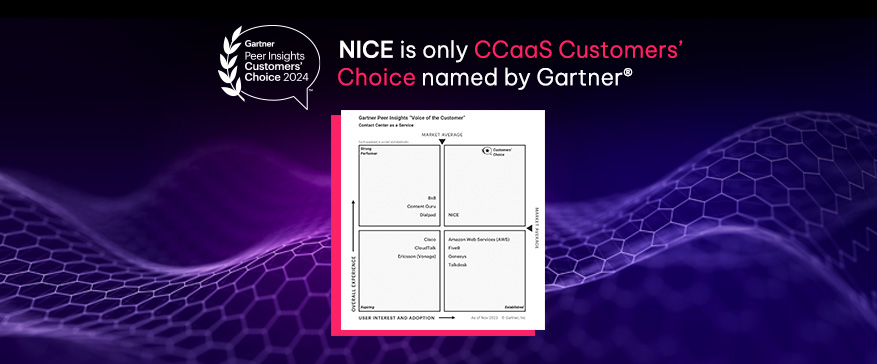What is Contact Center Abandon?
In contact centers, abandon refers to contacts that are ended by the initiating customer before they reach an agent. A typical scenario is a customer that makes an inbound call, gets tired of waiting in the queue, and hangs up before an agent can answer. Abandoned calls can also happen in the IVR and customers trying to chat can also abandon the chat session. With many dialer solutions, contact centers can also experience abandoned calls on outbound calling campaigns when the dialer reaches a customer but no agent is available to speak with him.
Abandon rate is a core metric contact centers actively monitor. It's calculated by dividing all contacts abandoned by all contacts offered, and then multiplying the result by 100. Abandon rate is directly correlated with another key contact center KPI - wait time, or queue time. When wait time increases, so does the abandon rate. Businesses should be concerned by high abandon rates (anything over ~3%) for a couple of significant reasons. First, every abandoned contact represents a missed opportunity to make a sale or strengthen customer engagement. Additionally, high abandon rates likely mean that customer satisfaction is taking a hit.
Workforce managers and other operational leaders keep a close eye on abandon rates throughout the day and make intraday adjustments to try to correct higher than average abandon rates. The most effective tool they can use to address bad abandon rates is to put more agents on whatever channel is losing contacts. Abandon rates can also be analyzed after the fact to pinpoint problem areas. For example, looking at abandon rates by time of day may unearth certain times when there are consistently not enough agents scheduled. Contact centers with IVRs should also regularly review abandon rates within the IVR to make sure there isn't something about the IVR that's making callers abandon at high rates.
Contact centers are typically willing to accept a certain level of abandoned contacts - it's a byproduct of trying to satisfy customers while also tightly managing labor costs. But when abandon rates begin to degrade the customer experience, action must be taken.
What are some common causes and solutions to contact center abandon?
As contact center abandon indicates customers are ending their calls or chats before reaching an agent, significant problems can arise for contact centers, such as reduced customer satisfaction, lost revenue, and increased costs due to inefficiencies. There are several problems that can lead to contact center abandon, including:
- Long wait times: If customers are forced to wait on hold for long periods, they may become frustrated and choose to abandon the call.
- Lack of self-service options: If customers are unable to find answers to their questions through self-service options such as automated IVR systems or online FAQs, they may be more likely to abandon their call.
- Poor call routing: If customers are repeatedly transferred to the wrong department or agent, they may become frustrated and abandon the call.
- Inadequate staffing: If contact centers are understaffed, customers may be forced to wait longer to speak with an agent, increasing the likelihood of abandon.
To reduce contact center abandon, there are several solutions that organizations can implement, including:
- Implementing self-service options: By providing customers with easy-to-use self-service options, such as automated IVR systems or online FAQs, customers can find answers to their questions without having to speak to an agent.
- Improving call routing: By implementing advanced call routing technologies that can quickly connect customers with the appropriate agent, contact centers can reduce the amount of time customers spend waiting on hold or being transferred.
- Increasing staffing: By hiring additional agents or implementing flexible staffing models, such as remote work or part-time employees, contact centers can reduce wait times and improve overall customer satisfaction.
- Providing callbacks: By offering customers the option to receive a callback when an agent becomes available, customers can avoid waiting on hold and can complete other tasks while waiting for their call to be returned.
By implementing these solutions, contact centers can reduce the number of abandoned calls and improve overall customer satisfaction.







